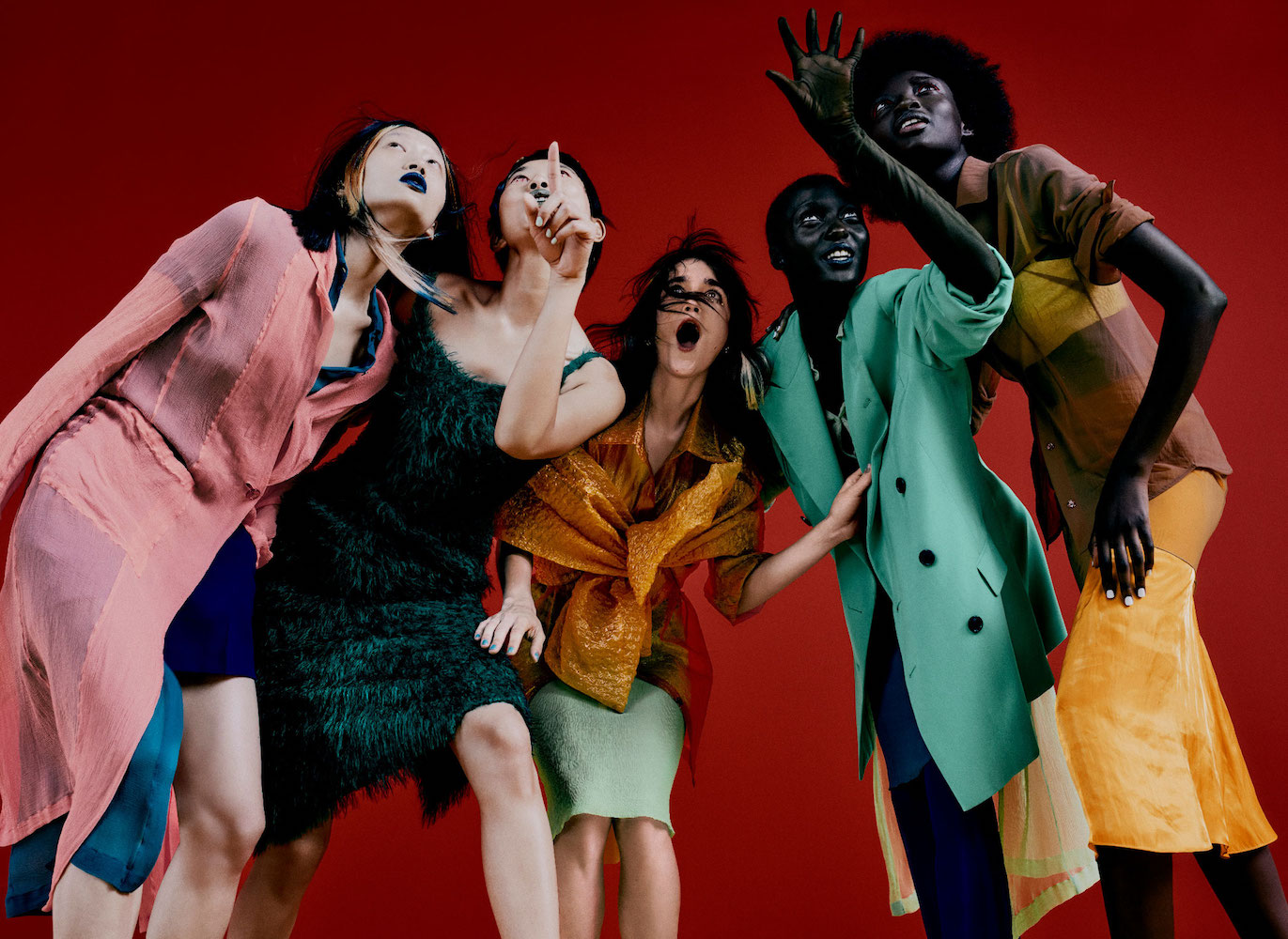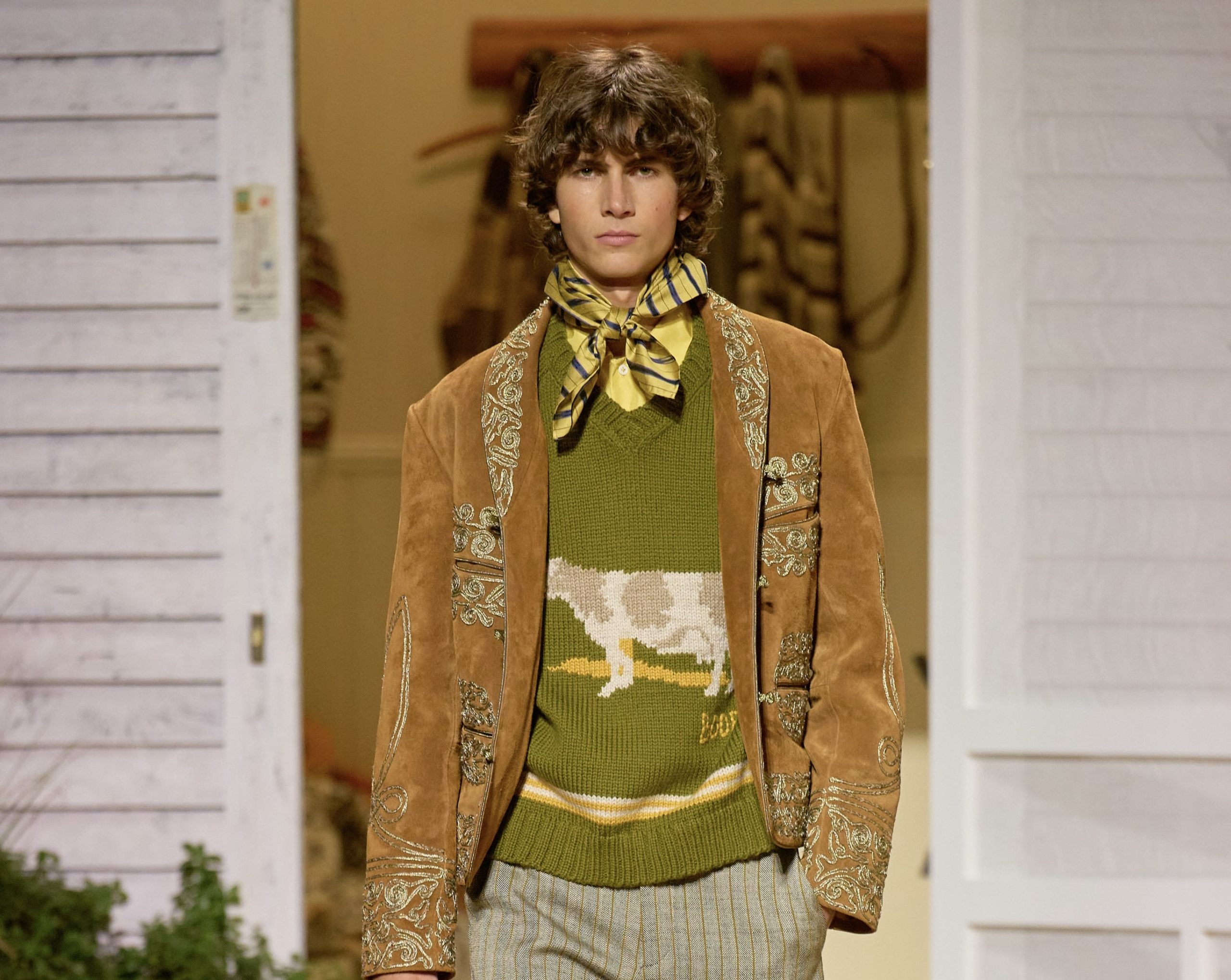In just two years, Marine Serre has become a fashion brand to watch. Its signature crescent moon pattern has become a lightning rod for its followers, a symbol for a new generation unconcerned with cultural boundaries.
Serre launched her eponymous label—wearing both designer and business hats—in 2017. Named “A Radical Call for Love,” that collection responded to the recent attacks in Paris and Brussels. She continues to create garments that react to the world around her. Serre has also brought her love of vintage, fostered in her early teens, into her process, upcycling fabrics in not only her Green line, but her Red couture line, too. White and Gold lines round out the production of Marine Serre, the latter providing a chance to experiment with new manufacturing and techniques.
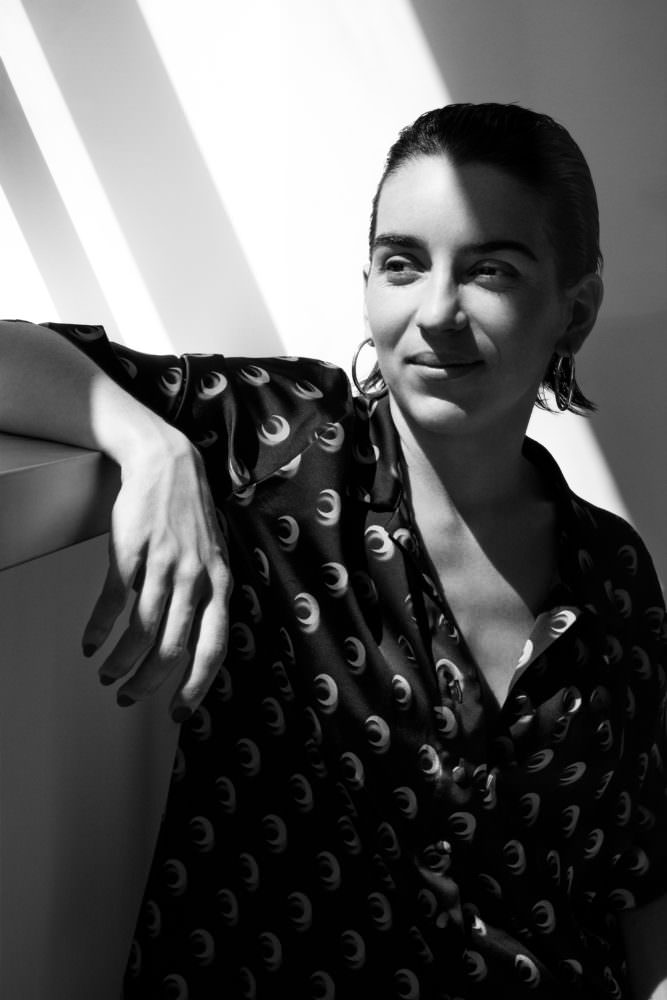 Photo by Angie Kremer.
Photo by Angie Kremer.
Whitewall caught up with Serre in Paris this summer to learn more about her vision for the future—of fashion and beyond.
WHITEWALL: Can you tell us about the inspiration behind your Fall/Winter 2019 collection, “Radiation”? How did this post-apocalyptic concept manifest into materials and silhouettes?
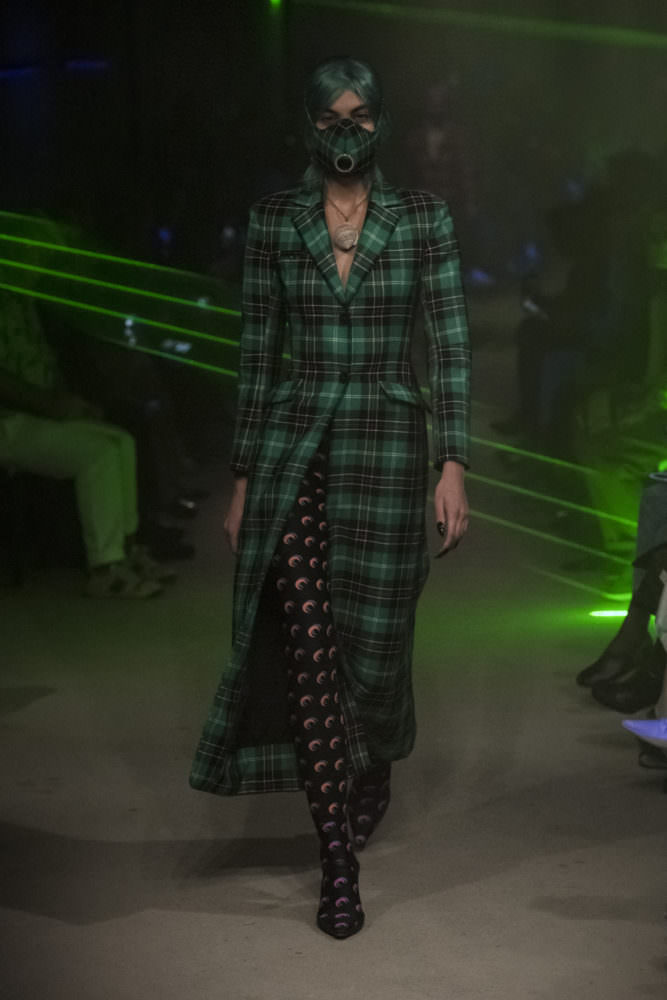 Courtesy of Marine Serre.
Courtesy of Marine Serre.
MARINE SERRE: “Radiation” was a special moment for us. When I make shows, they are linked to time—what we feel altogether as a team and in the streets. It’s a time for the brand, but it’s also a time for people. I thought this winter was quite dark, so it was a reaction to that.
And how did it manifest? I like things to be clear. People were invited to create a new society. So all the garments, in that sense, are really future oriented, because it’s all about what do you need tomorrow? And what do you need to survive? And also, what is fashion and how is fashion playing a role in tomorrow? It’s all these things I’m taking in and then creating a whole story of the collection.
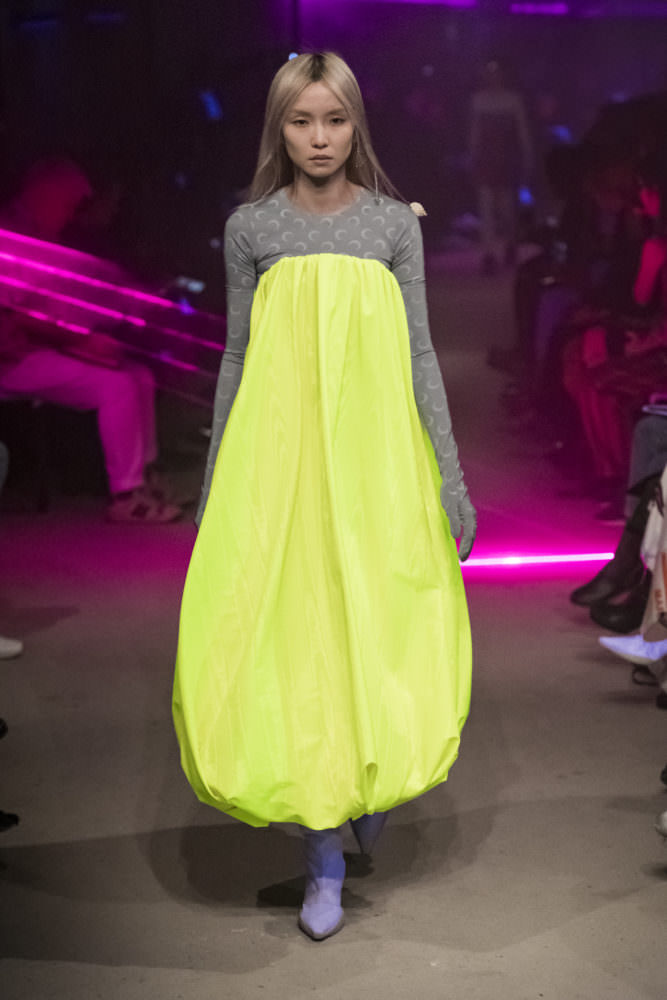 Courtesy of Marine Serre.
Courtesy of Marine Serre.
WW: When you ask, “What do we need tomorrow?” what has the answer been lately?
MS: I can mean this in a really practical sense. For example, we have certain types of pockets that we used 20 years ago that are not the size of a phone today. So it could be really pragmatic.
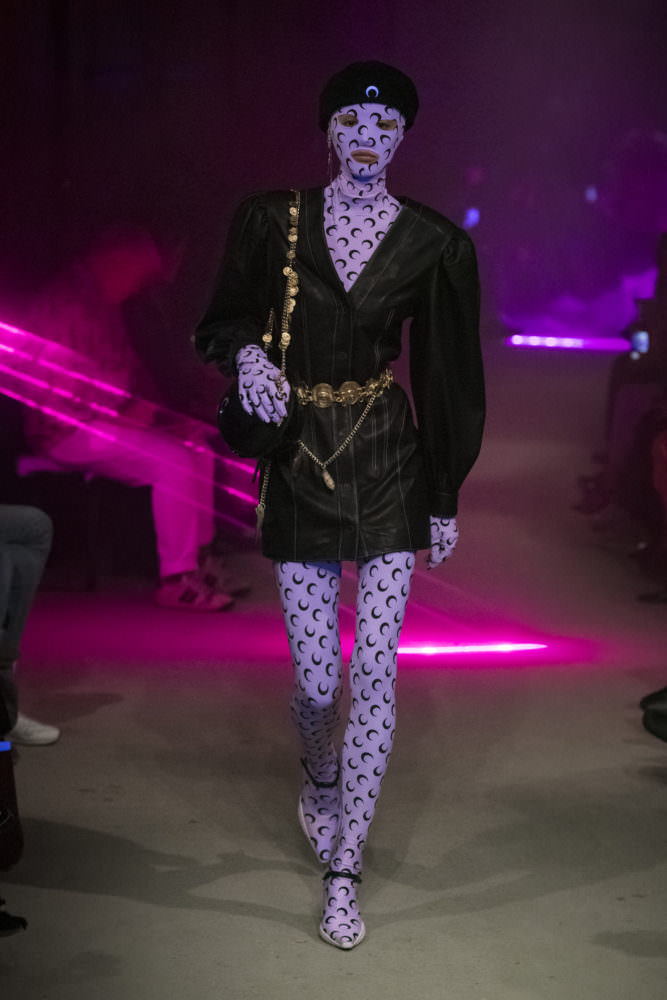 Courtesy of Marine Serre.
Courtesy of Marine Serre.
But I’m also thinking about the body of the women and men moving in these garments. I’m trying to make garments for hybrid people, because I think we are all hybrid today. I don’t believe in one image of oneself. And for functionality, that means shape, practicality, technique, fabric, or a certain engagement that you want to have when you wear this piece.
WW: How would you describe the role fashion is playing tomorrow?
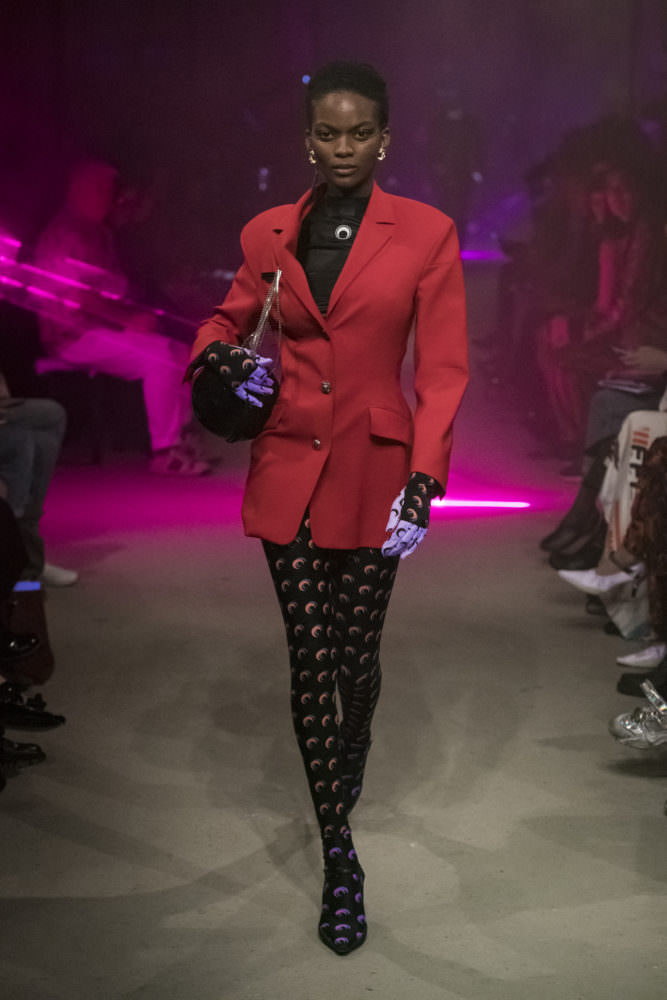 Courtesy of Marine Serre.
Courtesy of Marine Serre.
MS: I think fashion should always be new. Because otherwise it’s not fashion; it’s following something that is already there. I’m trying to be honest with what I see and evolve with it. I see making the garment as a way to express. I see the importance of garments today because you are always unconsciously part of fashion, even if you don’t want to be.
WW: You’ve said before that you’re trying to find a new belief. And to find a new belief, you have to be hard. What do you mean by that?
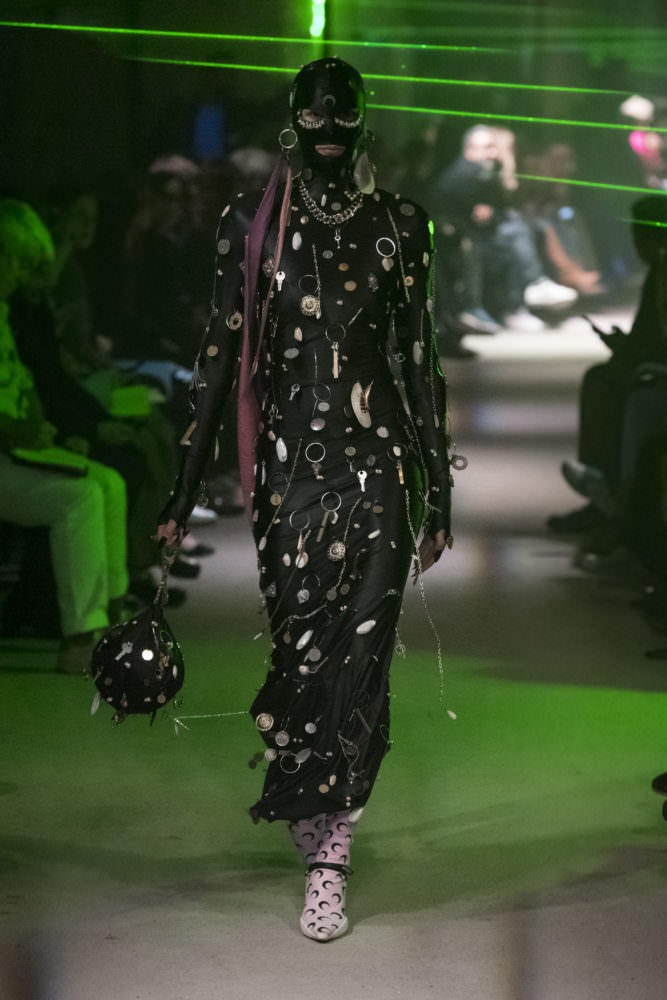 Courtesy of Marine Serre.
Courtesy of Marine Serre.
MS: The world, and also the world of fashion, is not so simple and easy. When you wish to change something, or when you have a vision that you want to defend, if you only do it halfway, or you corrupt yourself—“I want to do something, but this guy told me I should not do it . . .”—you have to convince yourself about what you are doing.
And this is why I, for example, started the Green line. I know whatever happens to me and to the brand, if I’m trendy or not trendy, it is something I can defend forever. This is really important. When you build a company and a team, you need to know exactly where you are going. Because today things are changing so fast that if you don’t know where you’ll go, you will lose your way. And to manage that, you have to be really hard because it’s a lot of work to not give up.
WW: In your Green line you use upcycled fabrics, but you’ve also introduced upcycling into your couture line. What do you enjoy about the process of incorporating upcycled materials?
MS: I started collecting garments and vintage pieces when I was 13. It’s something I was enjoying when I was really young. I have a huge library of vintage garments, things that had no value to the eyes of my friends, for example.
When I was at school in Belgium, I started working with upcycling, but without knowing that it was called upcycling. I just thought it was nice to use things that are already there, to transform things that are already there. I think the future is about that. Not thinking, “What can I make new?” but “How can I make things better, or make them evolve to something else?”
My first collection already had some pieces that were upcycled. And when I started my brand, I was thinking, “You can be courageous and want to work for your own brand for a long time.” This is what came clearly to me—that “You are good at transforming garments.” And this is how the Green line was created. And I’m really proud of it.
At the time when we started two years ago, no one was doing that. Not in production. The thing that is really new with us is not the concept of upcycling, but it’s the way that we are getting upcycled pieces into stores like Dover Street Market and Barneys and that every client can have unique pieces and at the same time some of our dresses are produced at a high quantity.
WW: Is there a message you want to convey with this approach?
MS: I’m just doing things that feel right. It’s quite instinctive. And that has an impact. I would be ashamed if my brand made something and in six months we threw it away. I’m trying to never be satisfied, to always evolve with the times and things that we need. This is my message, in a way—don’t think you know everything, search all the time. It’s a constant evolution. There’s always another step. Every month you find new techniques to make things in a better and more sustainable way.
To give you an example, for the Green line, we are trying to have some part of the process made here in house. And by having it in house, we basically need no trucks, no planes; we just do it here. We clean here, we dye here, and then we sell it here, reducing our carbon footprint.
WW: What do you think about the way your crescent moon print has been so embraced?
MS: I meant it like that. I meant it as a logo for everyone, in which everyone can recognize himself without boundaries.
WW: What is the responsibility of the designer today?
MS: I will say that we have a lot of responsibility, not only as the designer. I also consider myself a businessperson. I’m building a whole company from scratch. I have to think about how much I’m going to sell and where, and with which material, and in which country.
We have a lot of responsibility in changing things and in making things. There are many brands today. So why will people choose you?







